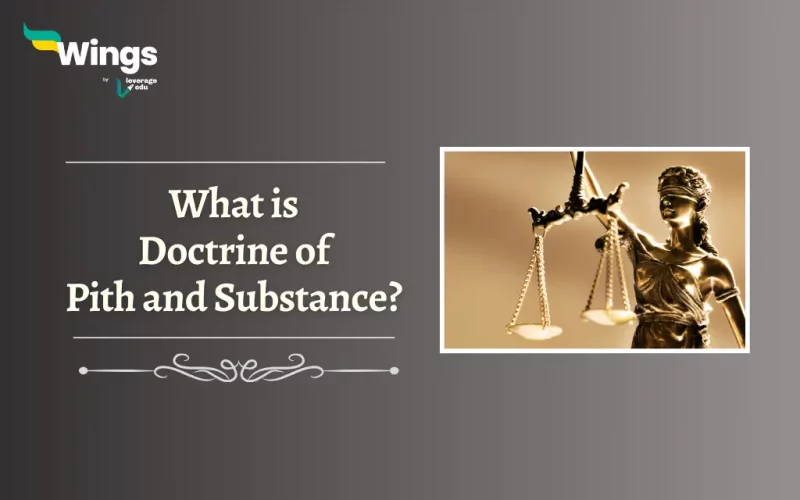The Doctrine of Pith and Substance is a legal doctrine. It distinguishes the true nature of a law when it seems to fall under the jurisdiction of more than one legislative body. In simple terms, it means that the law’s main purpose needs to focus on what the law is about rather than how it is written. Additionally, this Doctrine is especially suitable in Federal systems like India, Canada, and Australia. Since there is a division of legislative powers between the Central government and the States. Read on to learn about the legal meaning of pith and substance as well as examples of the Doctrine of Pith and Substance!
What is Pith and Substance?
Table of Contents [show]
“Pith” in legal terms means the core or essence of a law, while “substance” means its true nature or purpose. In addition, the Doctrine of Pith and Substance guarantees the upholding of that law’s true sense, even if its wording may suggest otherwise. Moreover, this means that the Courts will look beyond the literal meaning of the law to understand its underlying purpose and result.
Also Read: The Basic Structure Doctrine
Doctrine of Pith and Substance Example
One such example of the Doctrine of Pith and Substance is the State of Bombay vs. F.N. Balsara case, in which the Bombay Prohibition Act was challenged. Furthermore, the argument was that prohibiting liquor at the borders should be a matter for the Central Government. However, the Court found the Act to be valid because, in essence, it fell under the State List, even though it impacted the import of liquor.
Take into consideration another example. Imagine the Central government is passing a law regulating the sale of agricultural products. This might appear to intrude on the State’s power over agriculture. Nonetheless, if the Court, applying the Doctrine of Pith and Substance, decides that the law’s true purpose is to regulate interstate trade in agricultural products (a central government power), the law might be kept. On the other hand, while it incidentally affects agriculture (a state subject), the objective falls within the Central government’s authority.
Related Blogs
| How Many Schedules are there in the Indian Constitution? | What is the 9th Schedule of the Indian Constitution? |
| How many Parts are there in the Indian Constitution? | What is Dearness Allowance? |
I hope this blog answers your query on What is Doctrine of Pith and Substance. Moreover, you may even read more blogs and empower yourself with knowledge regarding Civics and Polity!
 One app for all your study abroad needs
One app for all your study abroad needs















 45,000+ students trusted us with their dreams. Take the first step today!
45,000+ students trusted us with their dreams. Take the first step today!
